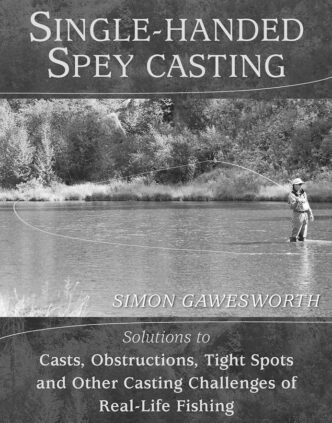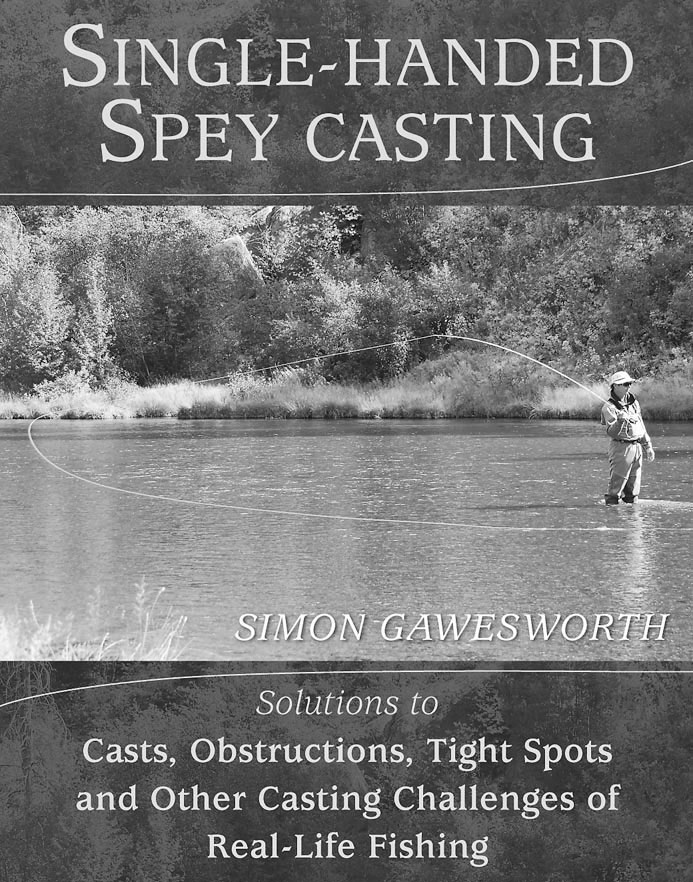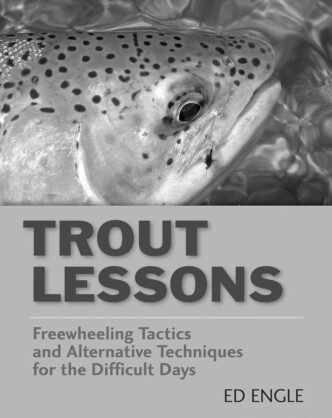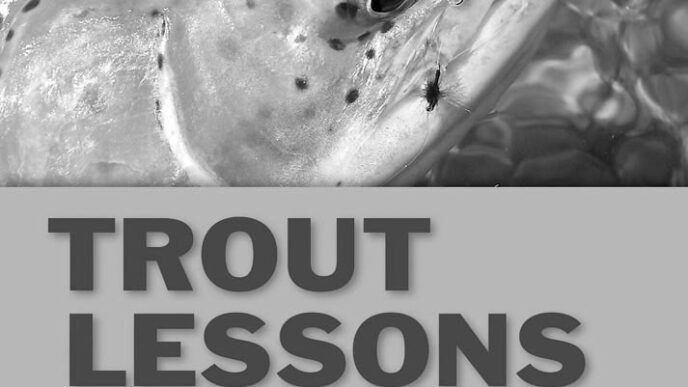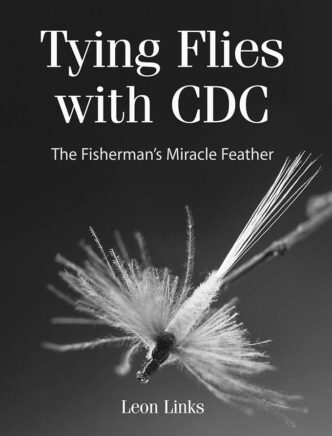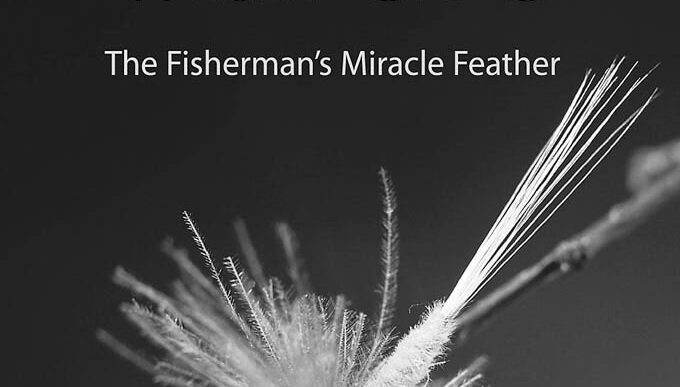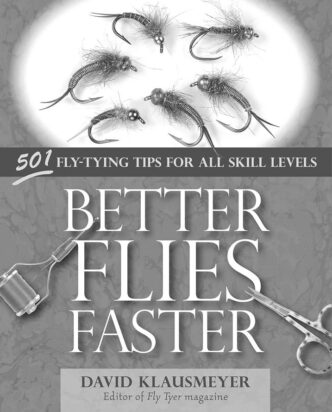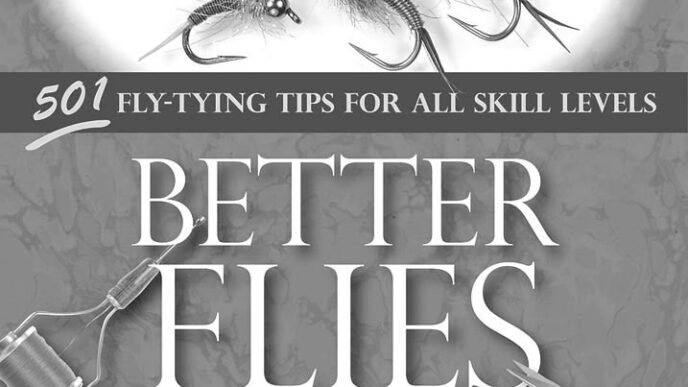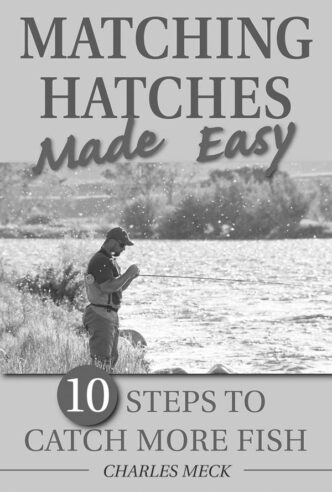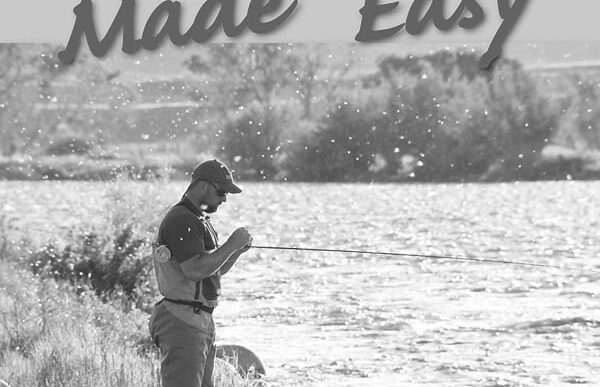Single-Handed Spey Casting: Solutions to Casts, Obstructions, Tight Spots, and Other Casting Challenges of Real-Life Fishing
By Simon Gawesworth. Published by Stackpole Books, 2010; $39.95 hardbound.
“It was a brave man who first ate an oyster,” Samuel Johnson is reputed to have said. No such claim is made about the guy who first roasted a fish. Some things seem weird and exotic, and some just seem natural. For whatever reason, learning Spey casting has been made to seem weird and exotic, the angling equivalent of eating an oyster — something you have to be persuaded to try, a pursuit that requires you to deviate from your everyday inclinations even to entertain. In Single-Handed Spey Casting, Simon Gawesworth shows that it’s really just as natural and commonsensical as eating a fish.
In addition to the roll cast, switch cast, single Spey, and double Spey that constitute the traditional canon of Spey casts, Gawesworth teaches a number of casts of his own devising, many of which have become part of the modern Spey caster’s repertoire — the snake roll, snap T, and dryfly Spey, plus specialty casts not exclusively part of the doublehanded Spey canon: the side cast, shepherd’s crook, reach cast, aerial mend, slack-line cast, and some casts constructed by adding together other casts, along with casts that add distance, from the double haul to the poke cast, and other refinements usually employed only by Spey casters.
Gawesworth makes all these casts seem like reasonable things to do with a fly rod, because they are. His account of how he came up with the snake roll probably also explains how, back in the mists of time, and in the mists of Scottish rivers, the traditional Spey casts were developed.
The cast came about by accident as I was bumming around, flicking fly line on the river one day, merging a couple of roll casts into one. My dad was videotaping me doing this, and it wasn’t until we were watching the playback that we saw it as a cast with potential. To be fair, I have seen many casters flicking their lines around in the same sort of way. You just develop an enjoyment of casting and fiddle around with stuff. Many people have made snake rolls without knowing the name — before and after I was playing around on the River Torridge — but the name seems to have stuck.
We all not doubt have flicked and flopped a fly line around, sometimes inadvertently, sometimes halfheartedly trying to get a roll cast to do something more than usual in order to change direction or avoid hanging a back cast in a tree. Well, with or without the benefit of videotape, if you think a bit about what happens when you flick a fly line around and maximize and systematize the results, what you get is what has been segregated in the angling world as “Spey casting.” In fact, it’s as logical an application of the physics of rod, line, and water as the overhead cast.
That doesn’t make it easy to teach in a book, however. Indeed, any book that aspires to teach any kind of casting confronts the problem that what’s involved is kinesthetic, not intellectual — coordination and muscle memory, not brainpower and conceptual understanding. I’ve looked at several books that, at least in passing, have attempted to teach double-handed Spey casting (I’ve not read Gawesworth’s own Spey Casting, however), but
I never came away thinking I could go out on the water and actually start to try to do it. Maybe it’s just because flicking a line around on the water with a single-handed rod is already familiar, but after reading Single-Handed Spey Casting, I can and (haltingly, so far) have done just that.
And of course, as the book’s subtitle points out, there are times — actually a lot of times — in “real-life fishing” when a simple overhead cast just isn’t possible. If you’re like me, that probably doesn’t prevent you from trying one anyway. (There used to be a dead sapling next to a riffle on the Deschutes that looked like the biblical burning bush, when the light was right, so festooned was it with monofilament and flies.) Or maybe you’ve tried a roll cast, without much success. Single-handed Spey casts are the answer, and Single-Handed Spey Casting provides it.
Gawesworth, a former tournament caster, is both a casting instructor and the son of a casting instructor, and as many great teachers do, he’s refined his explanations through long experience of what makes sense to students and what doesn’t. He begins with an explanation of casting basics that establishes a vocabulary for the instruction that follows, including a division of casts into “toand-fro casts” (including the overhead cast) and “continuous motion casts” — those with water-borne anchors and airborne anchors that help load the rod (the traditional Spey casts and some of the innovations). However, instead of beginning with the roll cast, the basis of the traditional Spey casts, he starts with what he calls the “catch cast” — a way to pop a fly out of the water at the end of a drift and have it sail right into your hand. That’s indicative of the playful spirit and tone of the book. It’s more systematic about casting than just flicking a line around on the water, but it’s fun.
In addition to clear and simple explanations that make a lot of sense, there is a series of color photos illustrating the key moves in each cast. Viewed sequentially, these actually work like a flip book, animating the cast. Between them and the text, if you read SingleHanded Spey Casting in the presence of other people, you will get some strange looks, because you will inevitably start waving your casting arm in the air, as if directing an invisible orchestra.
I also found the section on overhead casts such as the aerial mend and reach cast extremely helpful. Believe it or not, nobody ever told me that you need to shoot some slack line into these casts while making them, and when Gawesworth pointed out that basic fact, I repeated the immortal words of Homer Simpson: “D’oh!” Likewise, it turns out that the reason my double hauls never really add much distance is that I’ve been timing them all wrong. D’oh again.
How actually to use the book to learn and practice on the water is the only fly in the Gink here. You can’t very well hold it in one hand while wading, casting with the other, and a lot of these casts depend on the water to anchor the line and load the rod. This is a beautifully produced book, as Stackpole books usually are, but mine is going to get wet and muddy, because I’m going to be taking it to the stream with me. Single-Handed Spey Casting concludes with some brief chapters on tackle. While it’s definitely not a tackle book, as Gawesworth notes, what he has to say about rods, lines, and leaders offers some insight into the way tournament casters and casting enthusiasts view these essential elements. That’s especially interesting because casters such as Jerry Siem and Steve Rajeff also are rod designers. It’s revealing that when Gawesworth was a kid, in the days before modern fast-action rods, he underlined a 7-weight rod with a 5-weight line to get the “speed and response” he wanted. He’s quite clear that you should “pick a rod that will suit your casting style, rather than mine.” Nevertheless, what he says seems to explain a lot about the trend toward fast and faster rods — that is, rods that are difficult for schlubs like me to cast well. There’s also a short, but interesting discussion of leaders (he and his father once experimented with the shortest possible leader — one inch long) and a discussion of fly lines in which he surprisingly confirms my bias toward double tapers and also discusses Skagit lines.
In the March/April 2011 issue of California Fly Fisher,I interviewed Spey-casting maven Bob Pauli, who insists that Spey casts should not be regarded as some kind of weird and exotic subgenre of normal fly casting, but should be part of every fly fisher’s arsenal of casts. Single-Handed Spey Casting proves him right and can make it so.
Bud Bynack
Learning from the Water: Fishing Tactics and Fly Designs for the Toughest Trout
By René Harrop. Published by Stackpole Books, 2010; $39.95 hardbound.
For over fifty years, René Harrop has been fishing, guiding on, and tying flies for the streams of the Yellowstone area, especially the Henrys Fork. During that time, fly fishing has changed considerably, those attracted to it have changed, and the Henrys Fork and the Yellowstone waters have become heavily pressured international angling destinations. While he’s no conservative traditionalist — indeed, Harrop is an innovator in the sport, having been one of the apostles of the use of cul de canard (CDC) in fly tying — he’s not all that happy about the direction that fly fishing has taken, and in Learning from the Water, he takes readers along what he as learned to be a more taxing, but more valuable path.
“While rather indiscriminate in its results, the popular tactic of fishing a weighted imitation beneath a brightly colored strike indicator is nevertheless enjoyable to those who choose to avoid complication in a pastime that does not employ a strict set of rules for participation.” he writes in an early chapter. As he notes, “the innocence and simplicity of this type of fishing cannot be condemned as less sporting and enjoyable than another method of greater commitment and difficulty when it is responsible for bringing so many into the fold who might otherwise be excluded.”
“However,” he continues — and you could see that “however” coming a mile away — “there are those who select a more complex and demanding path into a world that does not reveal its secrets without intense study or give up its treasures without sustained diligence and respect.”
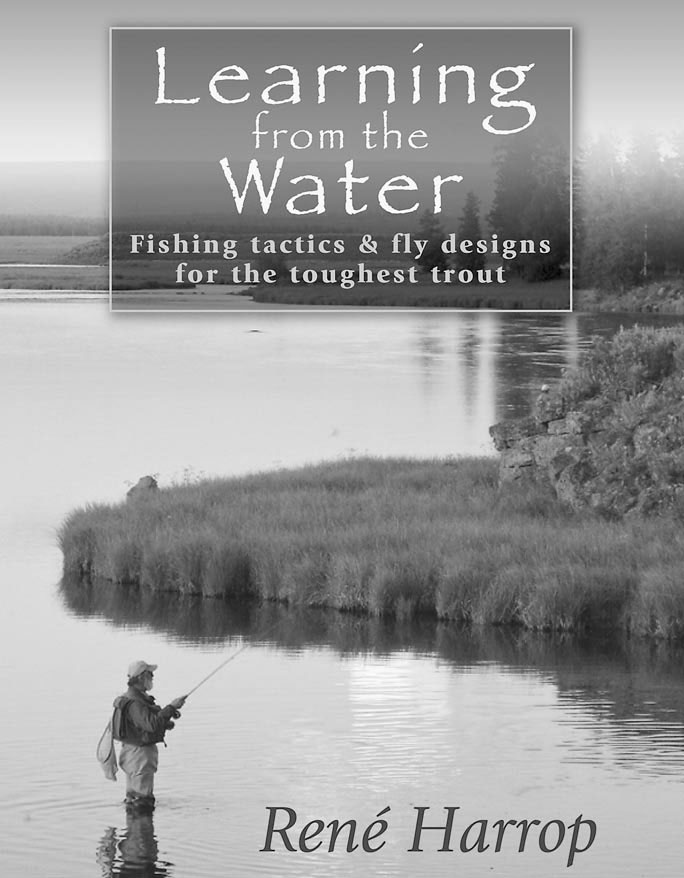
Put somewhat more gently, fly fishing is about something more than just catching fish, and there are literally centuries’ worth of writings that ponder, analyze, attempt to describe, and sometimes attempt to prescribe what that is. For Harrop, it is certainly something more than “purely recreational.” He’s serious about fly fishing, to say the least.
He’s no dry-fly snob, but he firmly insists that there’s no joy — and no fooling “heavy” trout — in taking the easy path. Harrop’s path means, for example, “selective nymphing” — sight fishing exact imitations of nymphs to feeding trout in shallow water, where it’s easy to spook and hard to catch them. It means long, fine leaders — 14 to 22 feet, with 6X tippets, and he supplies a formula for tying these that you can actually cast. It means often carrying as many as 15 stuffed fly boxes at all times, to be ready to match any hatch.
That attitude is both born from and perhaps the best approach to the task of fishing for large, extremely selective trout that have seen everything anglers can throw at them and that hold in shallowflats such as are found on the Henrys Fork. Whether or not you’re an “obsessed” angler of the kind that Harrop solicits, if you plan to make the pilgrimage to this classic Western trout-fishing destination, finding out what an angler like Harrop has learned from fishing there would be a good idea, and there is in fact a fair amount of advice on how to make a successful angling expedition to Yellowstone country. But much of what he says about fishing such waters throughout the book applies just as well to places such as the Fall River, Hat Creek, and Hot Creek.
And as you would expect from an angler with Harrop’s experience, there’s plenty of more general fishing advice, from “fishing the clock” (360-degree fishing positions and casts) to employing different kinds of hook sets in different situations and how to play big trout — something that most of us don’t get to practice. What I found most interesting, however, were the numerous chapters on fishing imitations of specific hatches, from caddises and midges to grasshoppers, Tricos (including Trico nymphs!), and Harrop’s special obsession, Pale Morning Duns. These are accompanied by fly plates and recipes, which feature lots of CDC, as one might expect, and biot bodies. A series that includes CDC Biot Emergers, CDC Biot Paraspinners, and CDC Captive Duns (another emerger–floating nymph pattern) is particularly provocative.
So there’s a lot to learn from Learning from the Water. As on the path chosen by the sort of angler that Harrop values, however, it takes a certain amount of commitment and overcoming of difficulty to extract it. The book could have used a firm editorial hand to prune and shape what is sometimes a compendium of basic how-to advice, sometimes very specialized advice indeed, sometimes just plain fish stories, and sometimes a collection of patterns and how to fish them, with a lot of the generic “There I was” introductions (“As dusk gathered, a fish started rising on the far bank” — that sort of thing) that such works seem to prompt.
Fly fishing is about something more than catching fish. If the path of discipline and commitment that René Harrop has trod appeals to you, Learning from the Water will help guide you along it. And even if you just want to catch fish, it can help.
Bud Bynack



